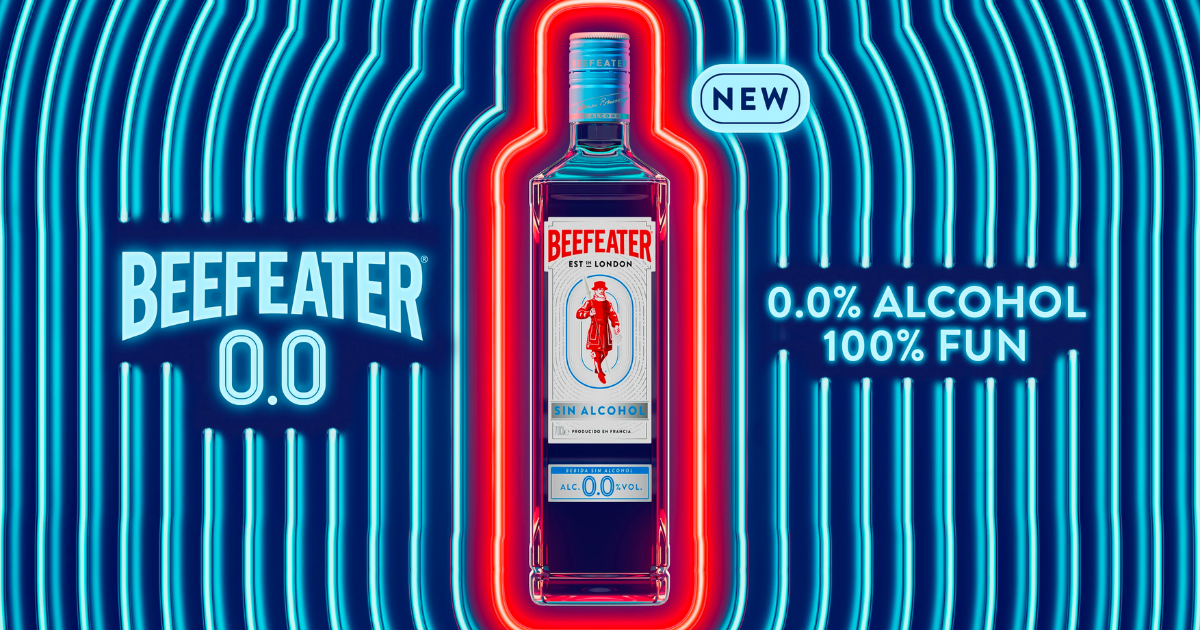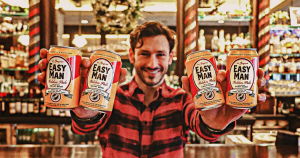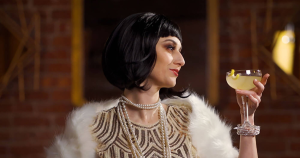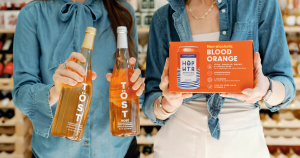With alcohol sales plateauing, Big Alcohol is increasingly betting on non-alc. Non-alcoholic variants of traditional beers, spirits, and even hard seltzers are on the rise, signaling that the alcohol alternatives category is here to stay. While many applaud Big Alcohol’s foray into non-alc, others raise questions about these companies’ motivations and whether or not they’ll have a positive impact on the space.
Beer
This trend is most apparent in the beer category. Heineken 0.0, introduced in 2017, now accounts for 7% of all Heineken brand sales in America and is available in over 110 markets globally. Guinness 0.0 wasn’t far behind; it launched in 2021 and currently represents 10% of all Guinness brand sales in Ireland.
More recently, Molson Coors has ramped up its non-alc efforts with offerings like its new Blue Moon Non-Alcoholic, Peroni 0.0., and Coors Edge. “Beer will always be at the heart of what we do, but we know there’s an enormous opportunity with non-alc and that’s why we’ve committed to making it an important part of our business,” says Kevin Nitz, their vice president of non-alcohol products. More recent launches in the beer space include Kingfisher’s Kingfisher Zero and Paulaner’s Weizen Radler 0.0%.
Spirits
In the spirits domain, Damrak Virgin and Tanqueray 0.0 launched in 2020 and 2021, respectively. Within the past six months, Diageo and Pernod Ricard introduced Captain Morgan 0.0% and Beefeater Gin 0.0% to the European market. Diageo spent over two years on formulation, while Pernod Ricard established a state-of-the art production line to serve as a one-stop shop for non-alc spirits production and R&D. Diageo and Pernod Ricard have also made significant investments in the non-alc space in recent years, including brands like Seedlip, Ritual, Ceder’s, and Ghia. Their launches reflect even deeper conviction in the non-alc opportunity.
Serious investment
Big Alc is backing their non-alc brands with serious dollars, too. Last summer, Guinness increased the production of its Guinness 0.0 by 300% after a nearly $30 million investment in its production facilities, signaling confidence in the non-alc beer market. Guinness is also investing heavily in marketing, from high profile sports sponsorships to large-scale giveaways (they gave away 50,000 free pints last St. Patrick’s day alone). Heineken just might be edging them out on marketing spend, though. According to the Wall Street Journal, Heineken is allocating a quarter of its global Heineken ad budget into Heineken 0.0. We’re also seeing slick, expensively-produced campaigns, like Diageo’s recent “Why You Always Why-ing” ad highlighting its Captain Morgan 0.0%.
Motivations for non-alc expansion
- The significant drop in alcohol consumption among younger generations is likely worrying these companies, with countries worldwide seeing a substantial percentage of Gen Z avoiding alcohol entirely. According to the latest IWSR data, Japan stands out with the highest level of abstention among Gen Z consumers, with 63% reporting that they haven’t consumed alcohol in the past six months. This is followed by the US at 54% and Canada at 44%.
- As large public companies, these alcohol giants might be hedging against investor concerns about the stagnant alcohol market, not to mention the negative impacts of alcohol on society. For example, Diageo has made moderation the centerpiece of its investor relations efforts with Society 2030, its “10-year ESG action plan.” (As of writing, five-year stock returns for AB InBev, Diageo, Molson Coors, and Pernod Ricard range from -14% to +4%. For context, the S&P 500 rose over 80% in the same period.)
- Launching non-alc brands clearly tied to the parent brand represents a clever advertising loophole. This strategy circumvents the tightening restrictions on alcohol advertising, particularly in sports in Europe, where there’s a push to protect underage viewers from alcohol brands. Non-alc brands are increasingly visible in sports, with industry giants like Guinness and Heineken leading the way. They’re leveraging their non-alc variants to sponsor a variety of sporting events, from soccer and rugby to the high-octane world of Formula 1. More recently, AB InBev announced that Corona Cero will be the first-ever beer to be globally sponsored in the Olympics. However, the use of brand names synonymous with alcoholic products raises questions about such marketing efforts.
What do consumers think?
A recent Dry Atlas reader survey revealed some concerns about Big Alcohol’s motivations, with 11% saying their involvement in non-alc is a bad thing. That said, the majority (61%) view it positively, appreciating the normalization of non-alcoholic choices. “More options is always better!” was a common sentiment. In the middle of the pack were those who raised concerns about the taste of these new products, assuming that they were fast-to-market cash grabs.
Big Alcohol’s success in non-alc will largely hinge on how well these companies can integrate into the non-alc market while maintaining the quality of their products. Other trends do provide a tailwind, including ABV optionality and flex drinking. The increasingly blurred line between alcoholic and non-alcoholic beverages bodes well for brands that offer both. The coming years will reveal whether Big Alc’s move into non-alc is a mere reaction to market trends or a strategic pivot that will have lasting effects on the industry—and on these company’s stock prices.






